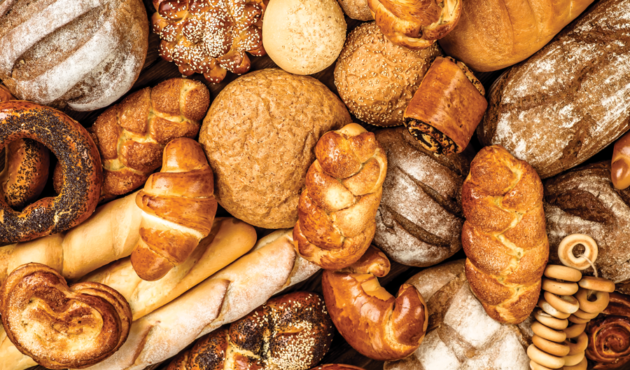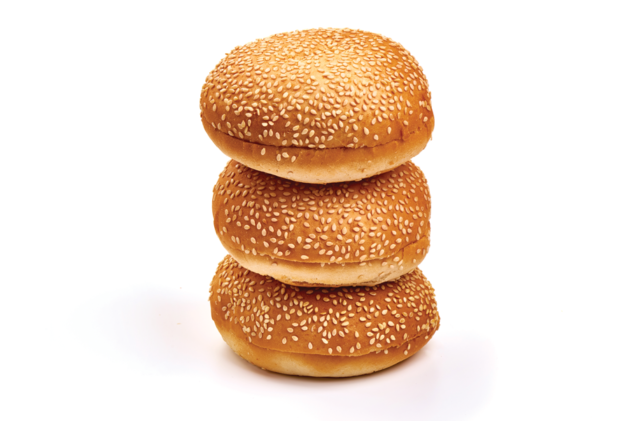
Enzyme solutions = better shelf life, texture
By Jane Dummer
Food Safety Processing Bake & Snack Food Ingredients & Additives Editor pick Enzyme technology Food preservationBaked goods manufacturers seek clean label solutions to prevent staling, mitigate cost increases and improve efficiencies
 Enzymes minimize food waste by improving a product’s shelf life. Photos © bukhta79, GSDesign / Adobe Stock
Enzymes minimize food waste by improving a product’s shelf life. Photos © bukhta79, GSDesign / Adobe Stock Enzyme technology is a must-have solution in baking today. It provides a consumer-friendly label solution while increasing shelf life, reducing waste, and decreasing costs. Enzymes work on a molecular level providing chemical reactions to improve shelf life and provide freshness. Bakeries need to have a comprehensive interpretation of their formulations, the processing environment and desired outcome to implement the best enzyme solutions. Working with ingredient suppliers, bakeries have access to enzyme solutions to create longer-lasting products that are less likely to be discarded due to staling and spoilage.
Jonathan Aleong, research & development manager, Puratos Canada, explains, “Enzymes are used to extend the shelf life of breads and baked goods primarily through texture modification. The main cause for loss of freshness is staling, which is a process that involves the recrystallization of starch, otherwise known as retrogradation. Previously, emulsifiers were the main tool used to combat the staling process. However, enzymes are now the solution of choice. They are clean(er) label and highly effective at maintaining the texture of baked goods. At Puratos, we have observed an increased demand for clean(er) label solutions for shelf-life extension to reduce food waste, as it also helps to mitigate cost increases and improve efficiencies at all levels of the food supply.”
Yanling Yin, director research development & applications for Bakery, Corbion (Lenexa, Kan.), adds, “Enzyme technologies are commonly used in the baking industry to extend the shelf life of breads and baked goods. Enzymes are natural catalysts that can break down and modify various components in dough, leading to improved dough handling, better texture, and increased volume. Certain enzymes can also break down starch to slow down its retrogradation to maintain product softness during shelf life. The modification of starch or protein can lead to the production of various flavour compounds that enhance the taste of baked goods.”
Troy Boutte, PhD, vice president – innovation, AB Mauri North America describes, “Shelf life extension started many years ago with emulsifiers to boost typical freshness to about five days. However, starting in the mid-1990s with the advent of modern enzyme technology, shelf life has steadily increased to the point where now we are more limited by mold growth than staling. Some baked goods currently have a shelf life of more than two months. While anti-staling enzyme technology was used mostly in yeast-raised goods initially, it is commonly utilized in chemically leavened products with good effect.”

Enzymes allow hamburger buns to stay fresh longer while maintaining their texture and flavour.
Shelf life extension examples
Aleong says, “Our Intens Freshness 2-30 and Acti-Fresh, are examples of enzyme-based solutions that have been specially designed to extend the freshness of breads and cakes from days to weeks, helping to reduce waste and providing a superior eating experience. A little bit of enzymes can go a long way, with even a modest improvement in shelf life yielding a tremendous impact on food waste. For example, we have helped a customer extend the shelf life of a high-volume bakery item for just one additional day that resulted in the prevention of more than half-a-million kilograms going to landfill and equated to annual cost savings of over $1 million.”
Yin offers sandwich bread and food service hamburger buns examples. “A sandwich bread made without enzymes typically has a shelf life of three to five days. By using an enzyme blend, the shelf life of sandwich bread can be extended to seven-10 days. In some instances, up to 21-28 days while maintaining the texture and flavour of freshly baked bread. Most quick service restaurants use frozen hamburger buns after thawing for use in each location. Without extended shelf life (ESL), the buns become crumbly and dry after thawing for a day. With ESL enzyme solution, the buns can stay moist and soft for more than five days,” she says.
Boutte identifies, “The initial implementation of anti-staling enzymes was in the 1990s. Before anti-staling enzymes, somewhere around 15 per cent of yeast-raised baked products were returned as stale. After anti-staling enzymes were introduced, the return rate dropped rapidly to only four or five per cent and is even lower now. Ultimately, more of the bread was being eaten and not going to waste. The effect was so significant that flour millers saw flour production decrease. This, of course, meant fewer wheat fields had to be fertilized and planted for wheat production, resulting in less packaging waste and fuel used for shipping.”
Enzymes solutions reducing food waste
Aleong explains, “Waste can occur at all stages of the bread or baked good life cycle, whether it’s during manufacturing, distribution or at home. Enzymes have a proven track record to be able to extend the shelf life and improve processing, helping to minimize waste at all stages. They are a necessary tool for combating food waste, improving sustainability, and meeting the needs of the increasingly health-conscious consumer.”
Abby Ceule, senior director of ingredient solutions, Corbion, describes, “Enzyme technologies have significant potential to reduce food waste, ensuring that food is consumed before it spoils. It’s worth noting that enzyme technologies are not a silver bullet. They should be used as part of a larger approach to reducing food waste. By working closely with ingredient suppliers, bakeries can access expertise, quality assurance, innovation, and supply chain efficiency, verifying the right ingredients and achieving the desired functional and sensory properties in their baked goods.”
Boutte concludes, “In the past 20 years, enzymes have gone from nice-to-have to must-have. This is due to their functionality and favourable consumer perception. Enzyme use is a prime example of sustainability. We can treat 1 million lb of flour with 1 or 2 lb of pure enzymes despite enzymes being diluted for ease of use. A typical emulsifier system would require 5,000-15,000 lb to treat the same amount of flour. While enzymes and other ingredients require the use of agricultural material and energy for production, enzymes require far less and do not put pressure on the food supply. Overall, enzyme use greatly reduces carbon footprint including energy used for manufacturing and shipping.”
This article was originally published in the April/May 2023 issue of Food in Canada.
Print this page